Functional programming emphasizes the absence of side effects and immutability, focusing on composing first-class functions. It contrasts with object-oriented programming by separating data and behavior, advocating for functions to be treated as first-class citizens while avoiding mutable state. Key concepts include pure functions, higher-order functions, and the use of composition and partial application to create new functions.
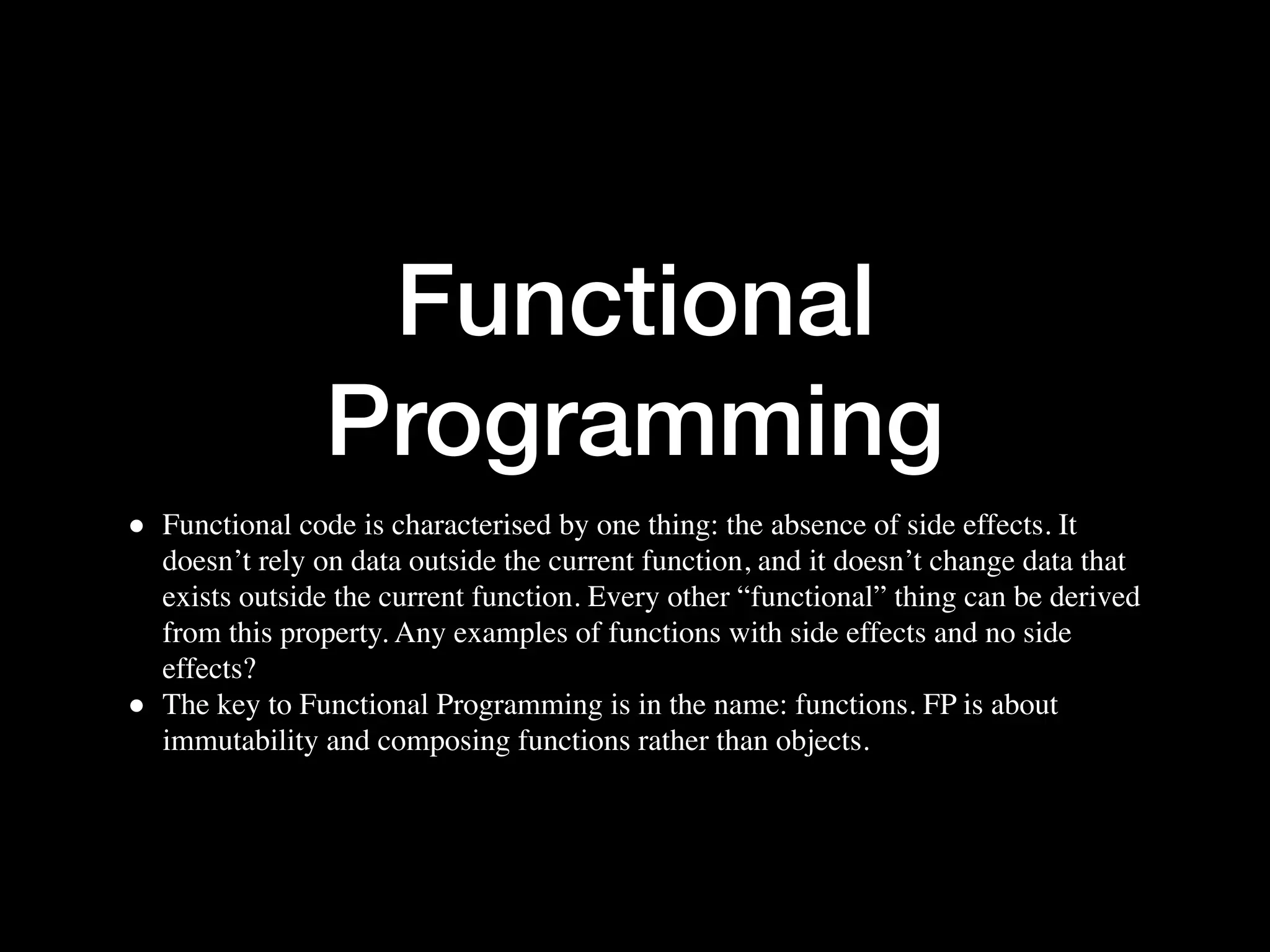
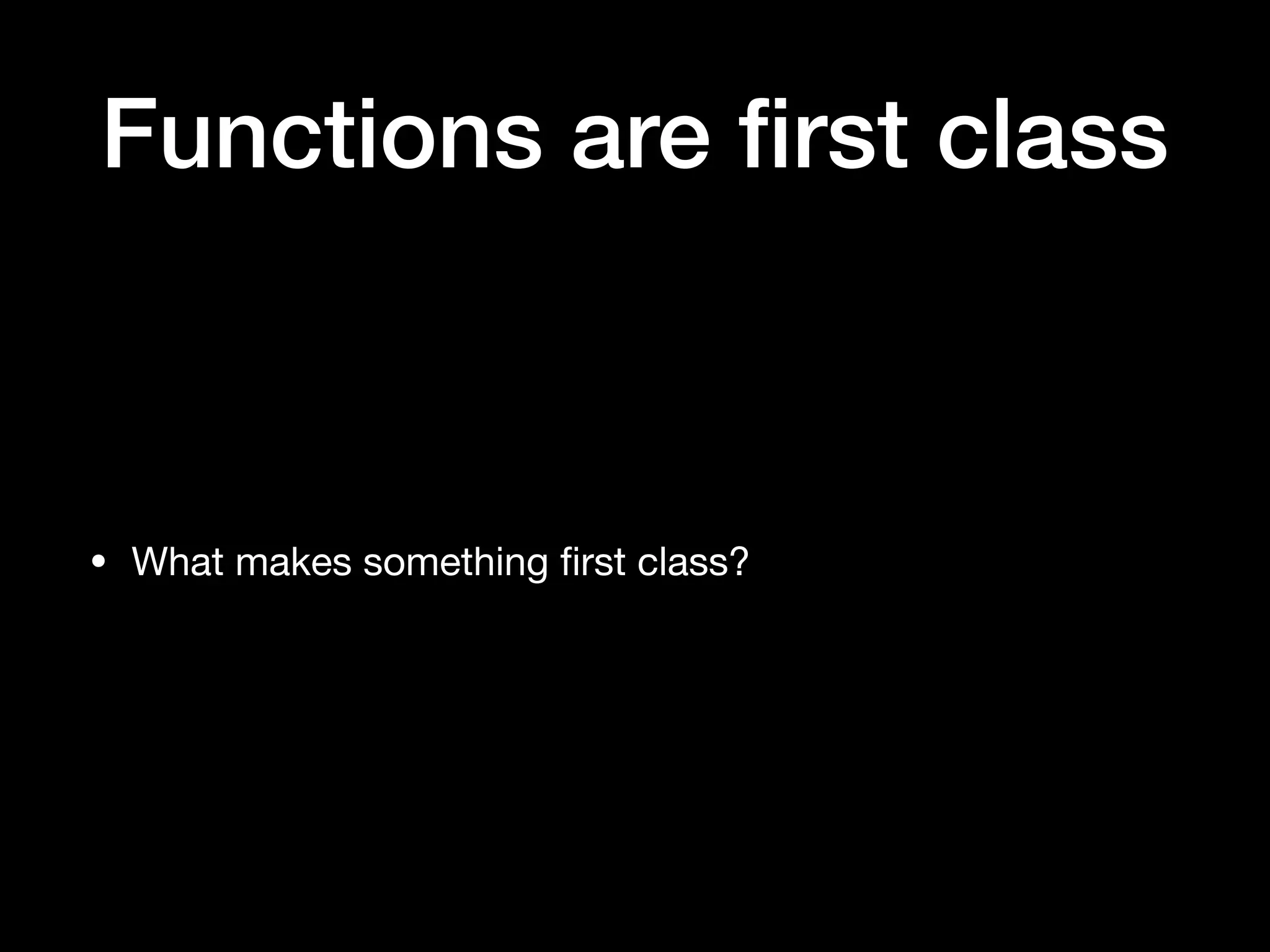
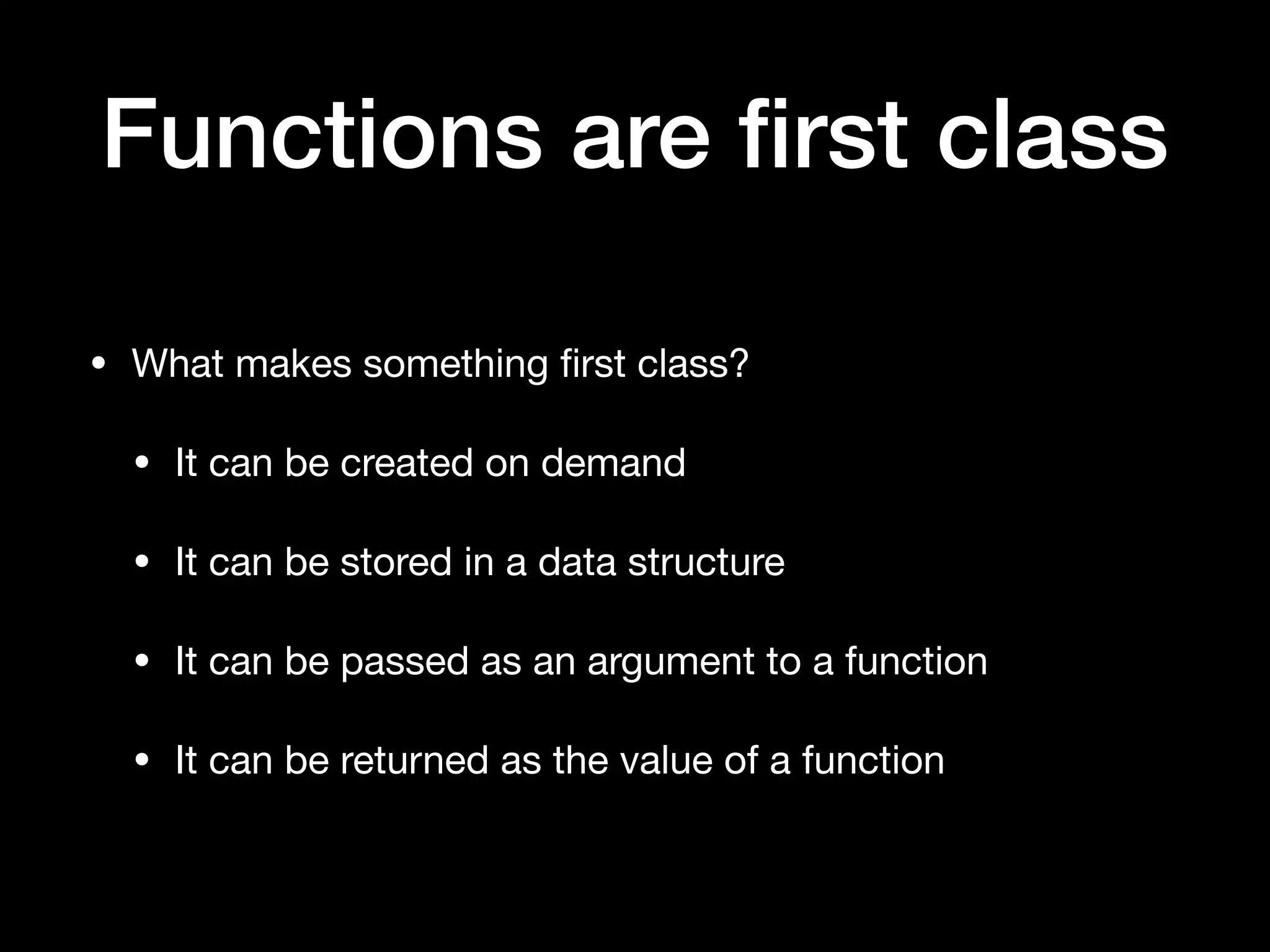
![Creating functions on demand using composition Find the fifth element of a collection: (def fifth (comp first rest rest rest rest)) (fifth [1 2 3 4 5]) •comp : Takes a set of functions and returns a fn that is the composition of those fns •first: Returns the first item in the collection •rest: Returns a possibly empty seq of the items after the first. •Find nth element of a collection using composition?](https://image.slidesharecdn.com/fpbasic-180530124424/75/Basics-of-Functional-Programming-4-2048.jpg)
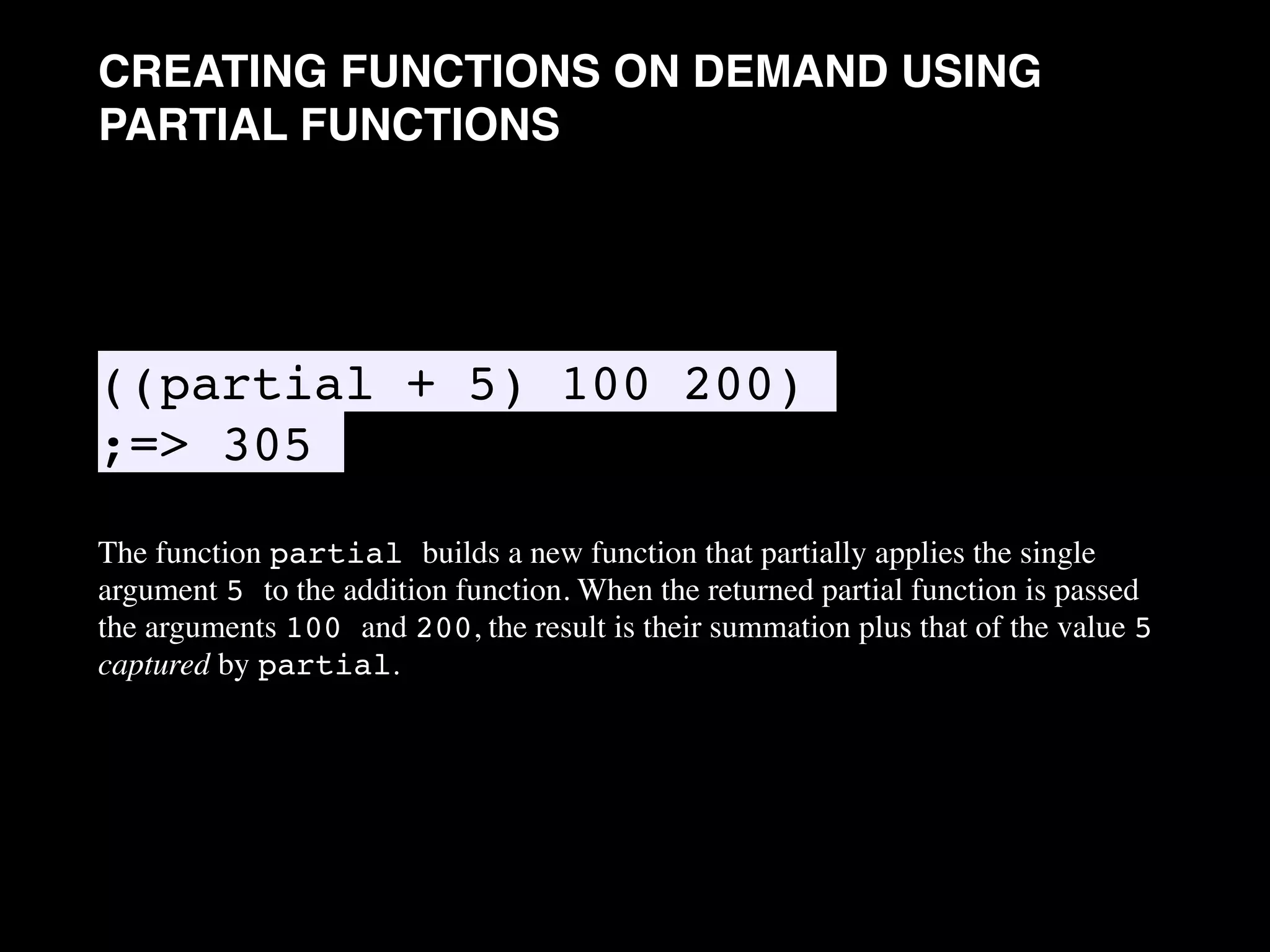
![USING FUNCTIONS AS DATA • First-class functions can not only be treated as data; they are data • It can be stored in a container expecting a piece of data, be it a local, a reference, collections, or anything able to store a java.lang.Object. (defn join {:test (fn [] (assert (= (join "," [1 2 3]) "1,3,3")))} [sep s] (apply str (interpose sep s))) •](https://image.slidesharecdn.com/fpbasic-180530124424/75/Basics-of-Functional-Programming-6-2048.jpg)
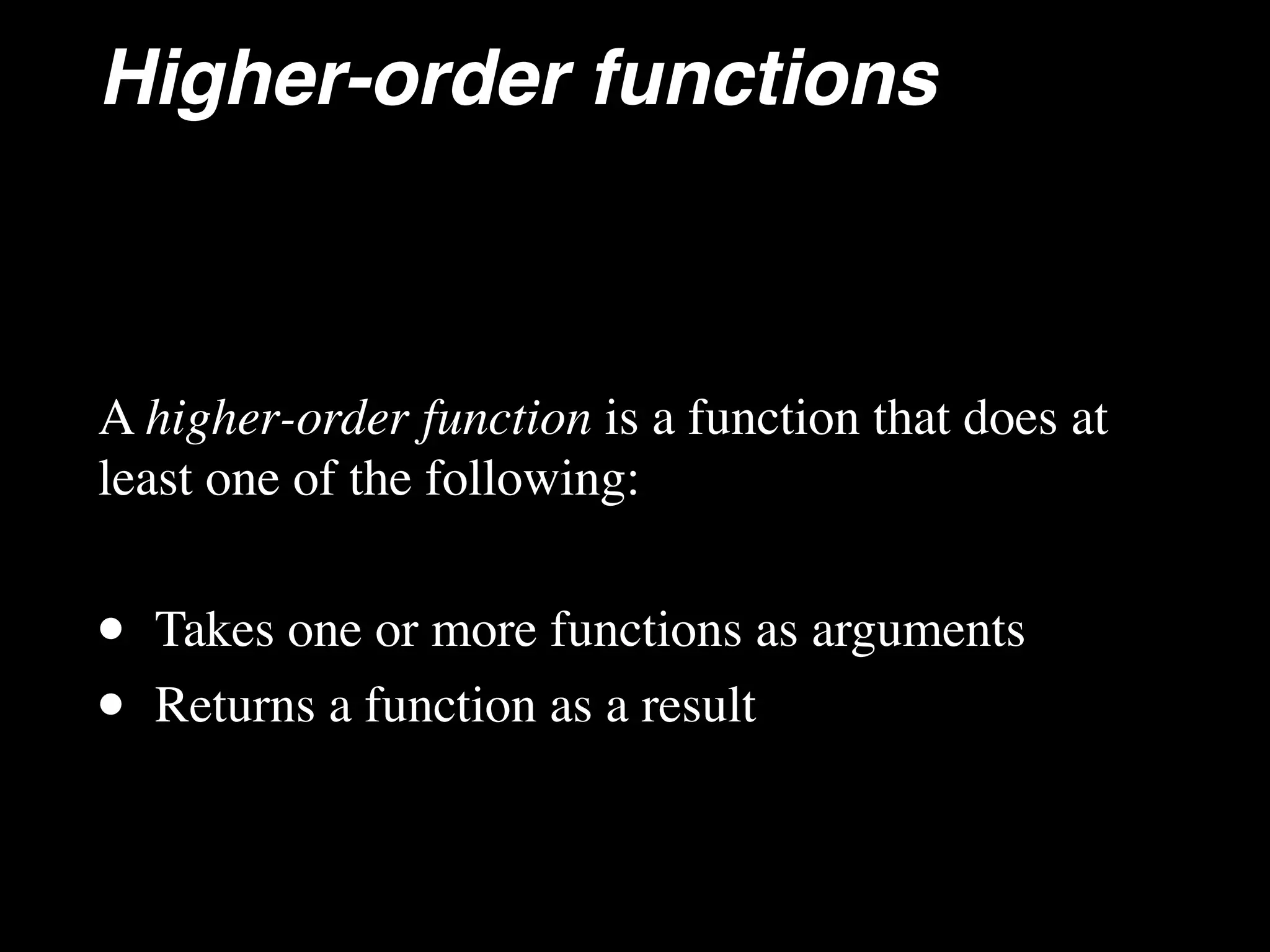
![Functions as Arguments (sort-by second [[:a 7], [:c 13], [:b 21]]) ;;=> ([:a 7] [:c 13] [:b 21])](https://image.slidesharecdn.com/fpbasic-180530124424/75/Basics-of-Functional-Programming-8-2048.jpg)
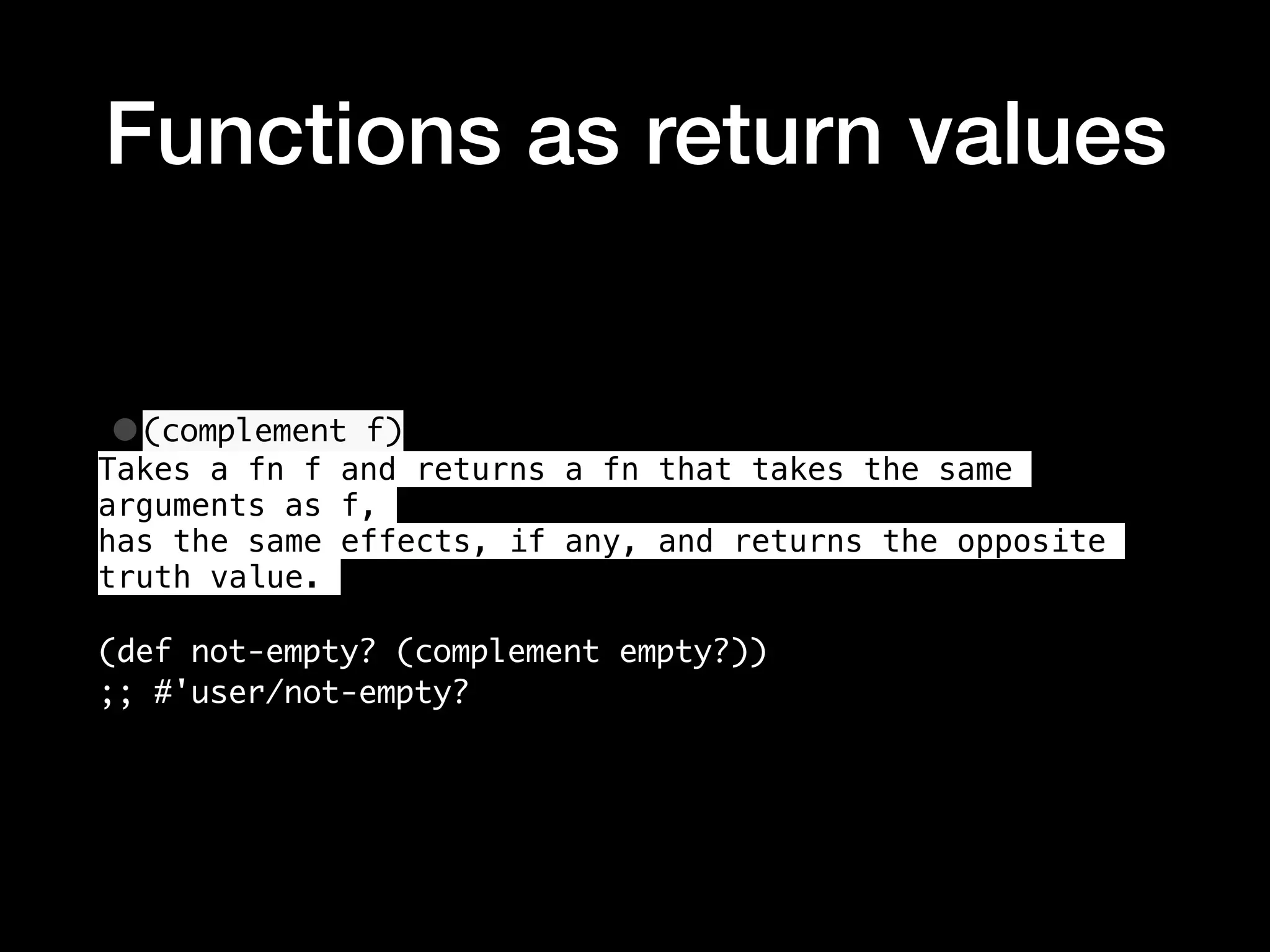
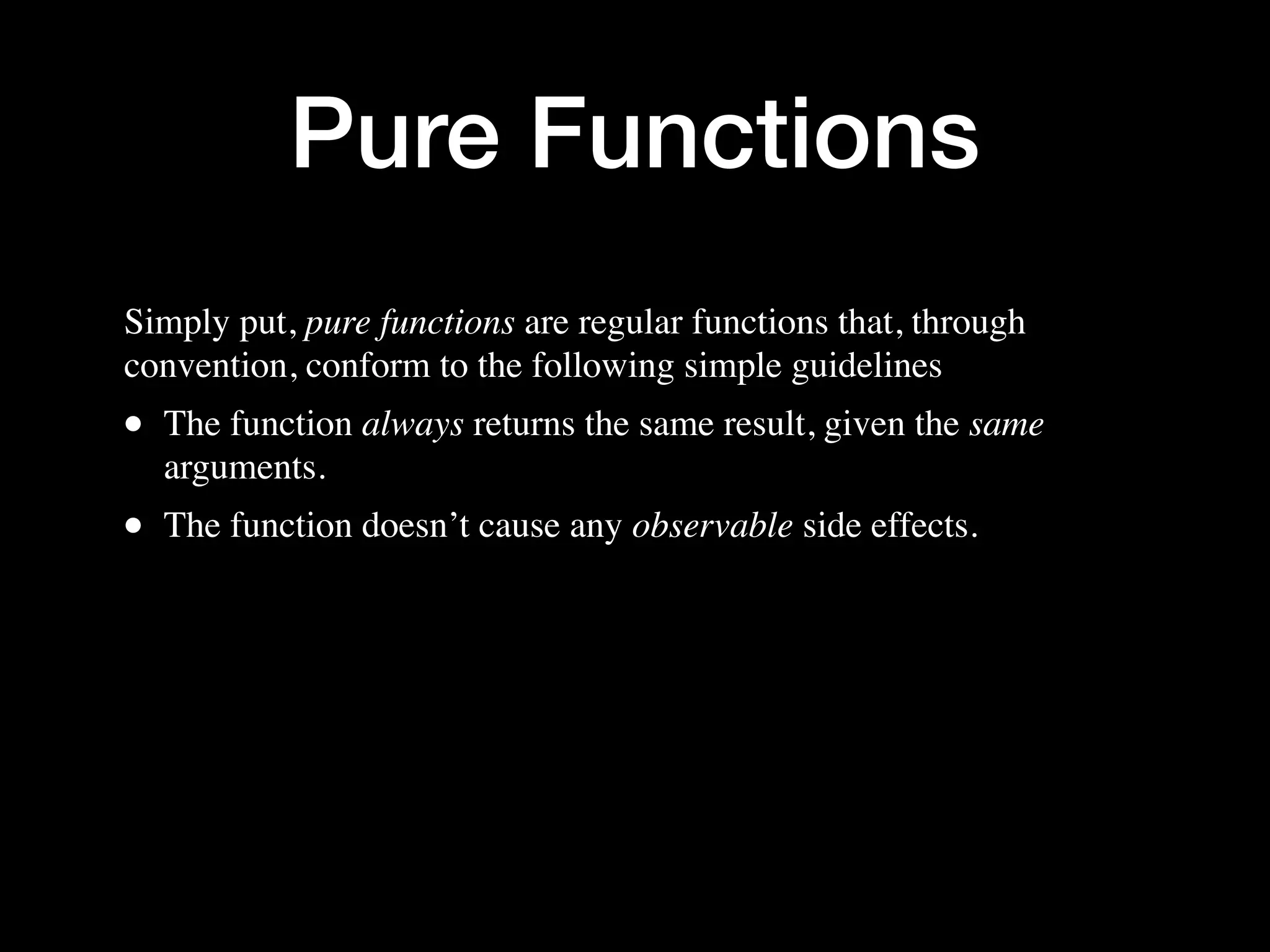
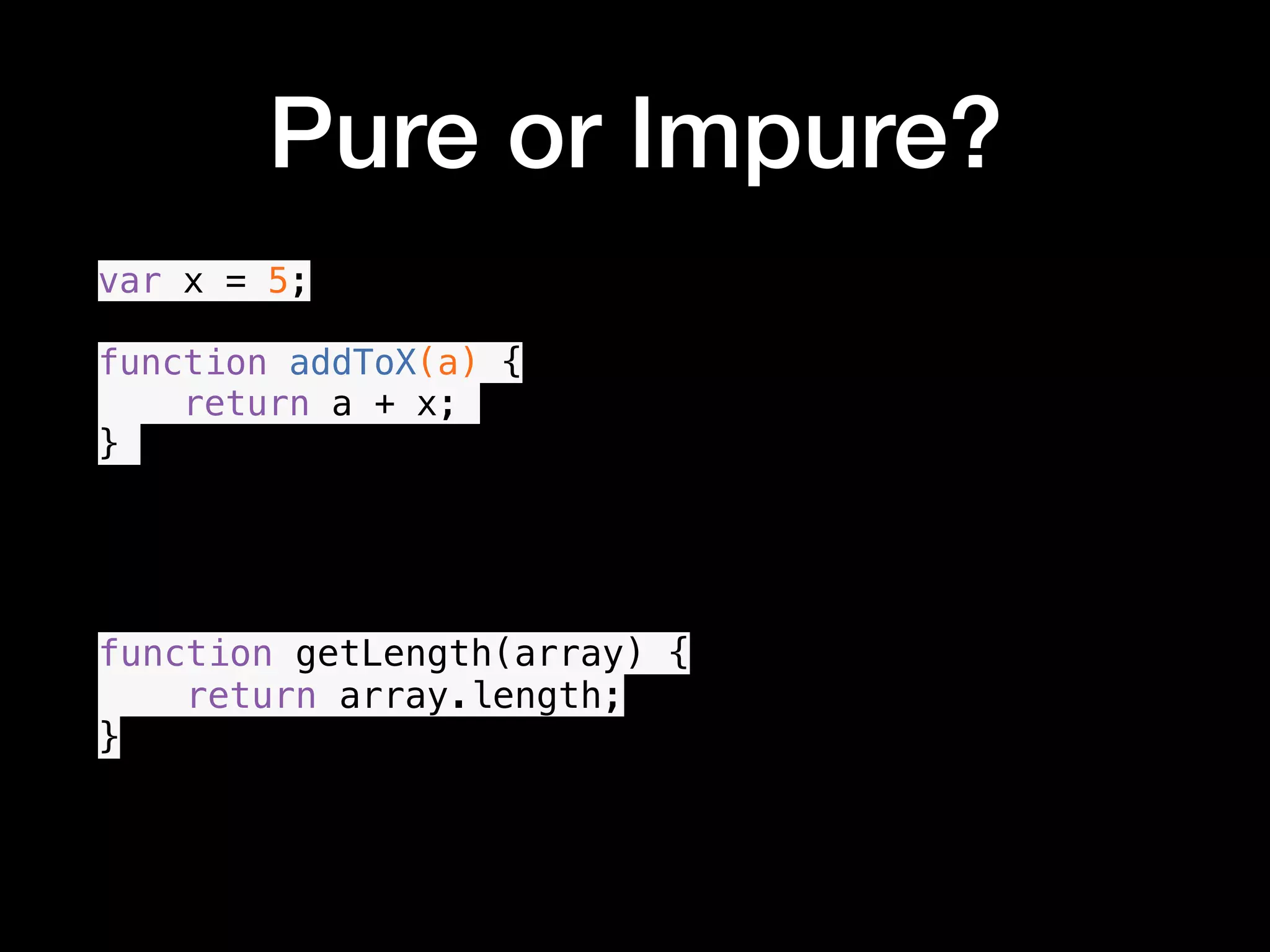
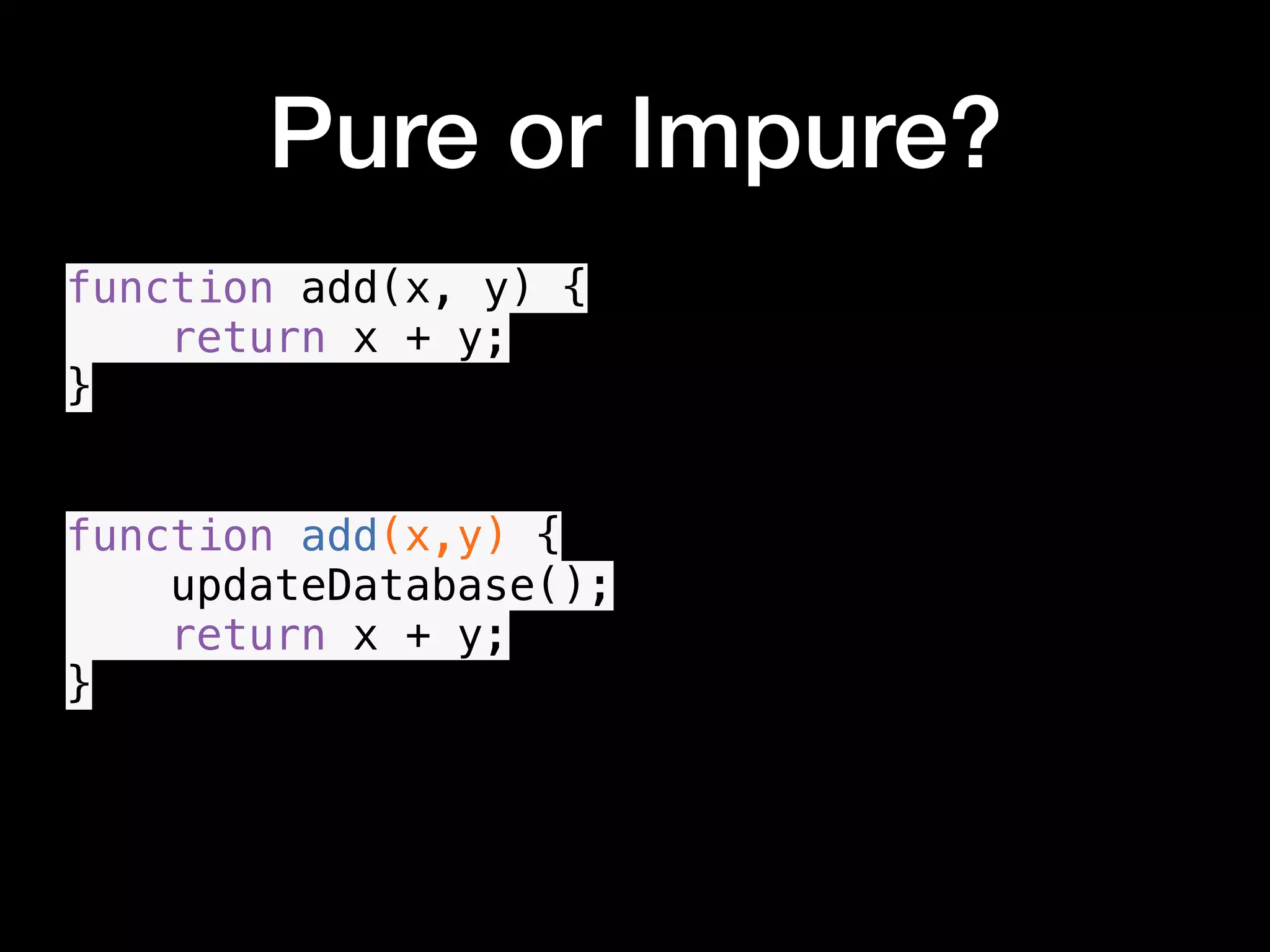
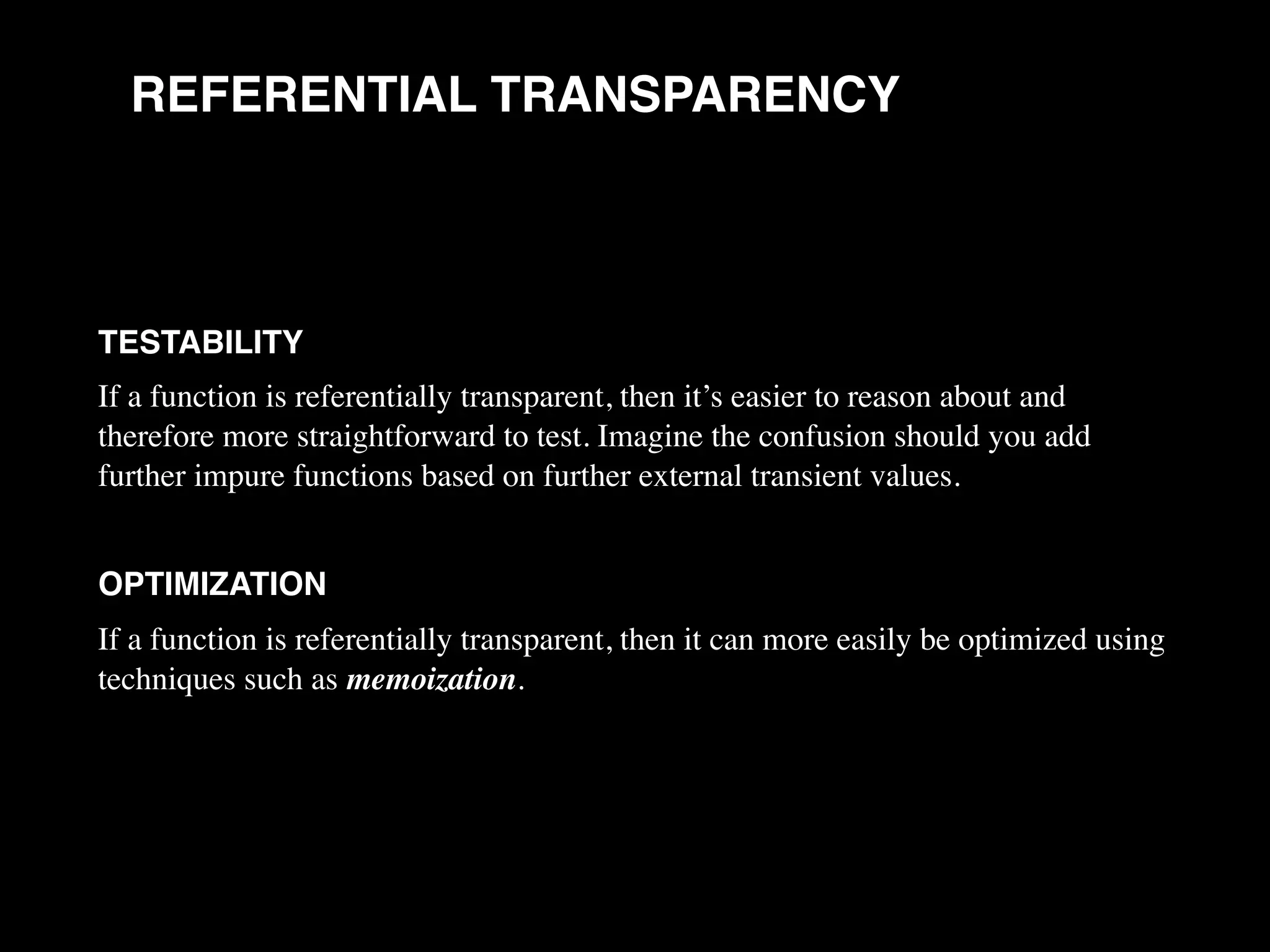
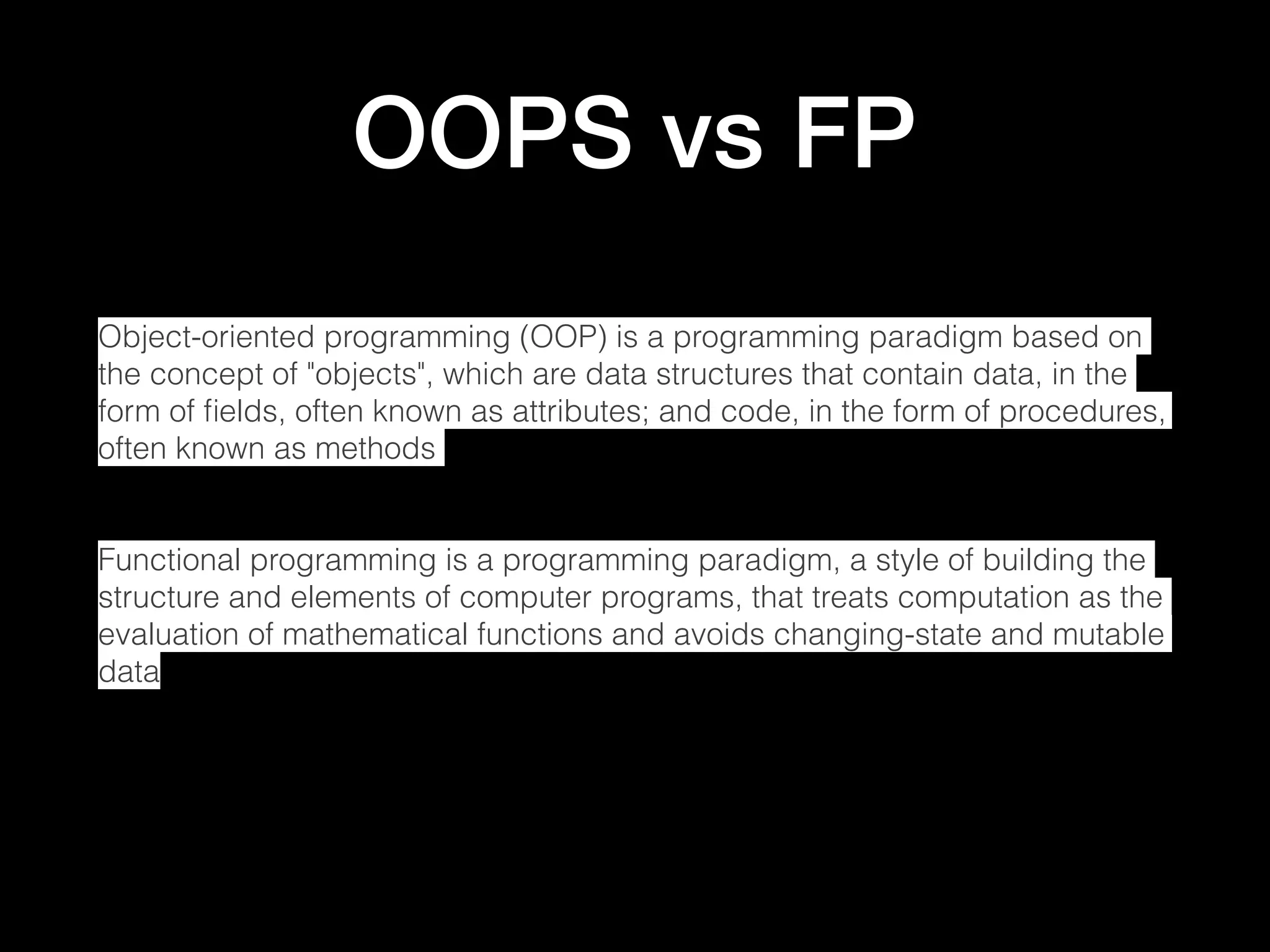
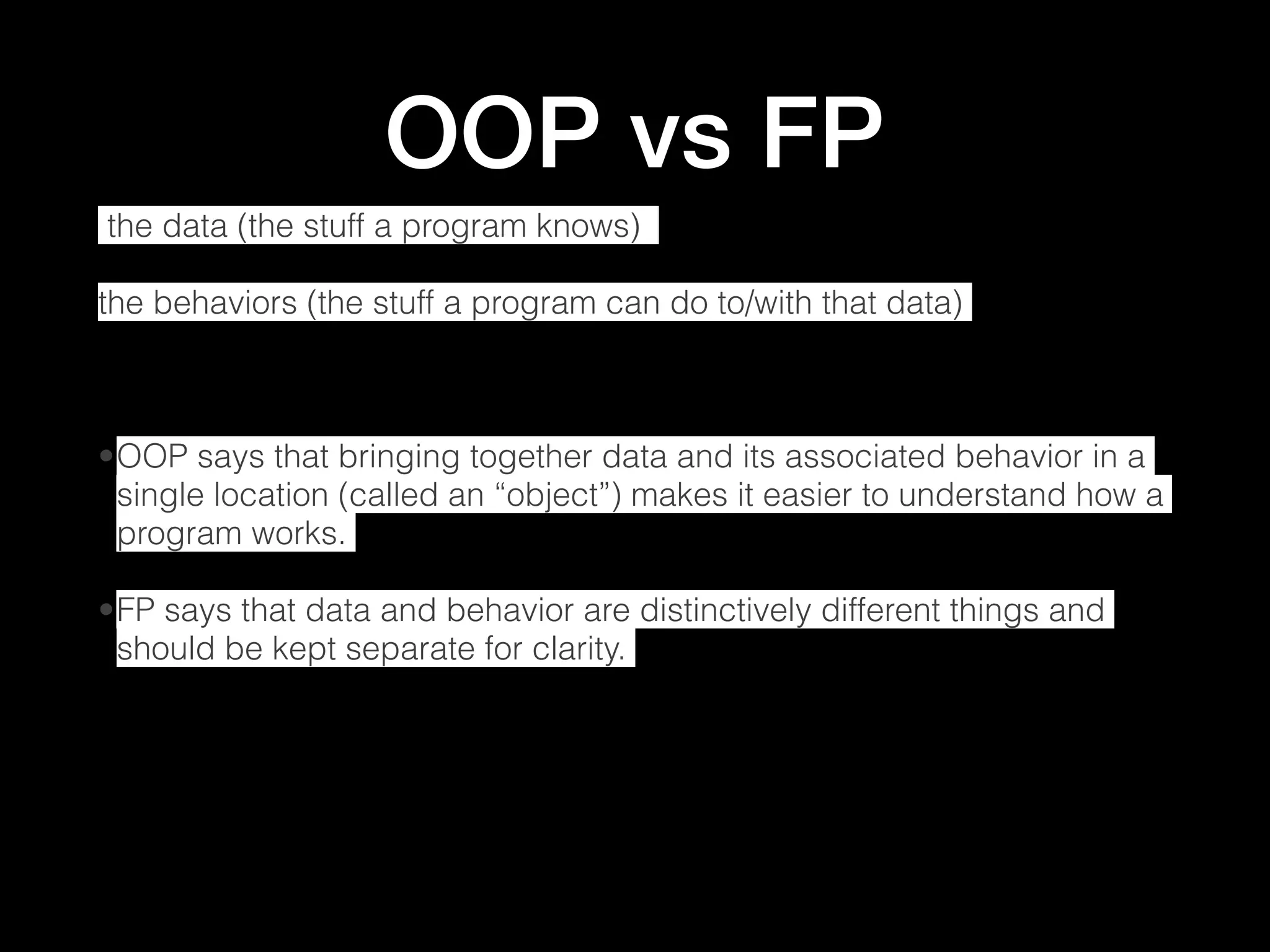
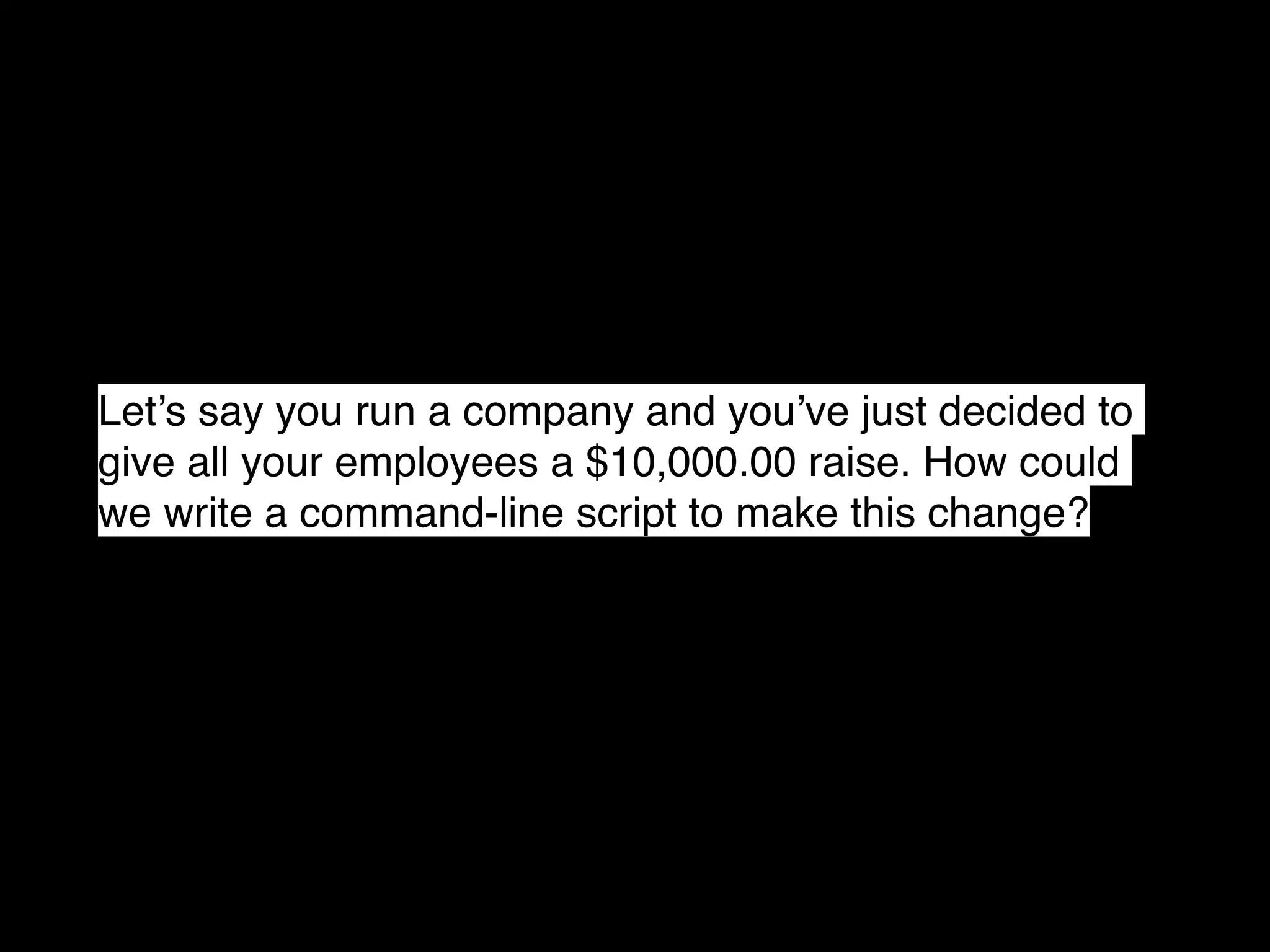
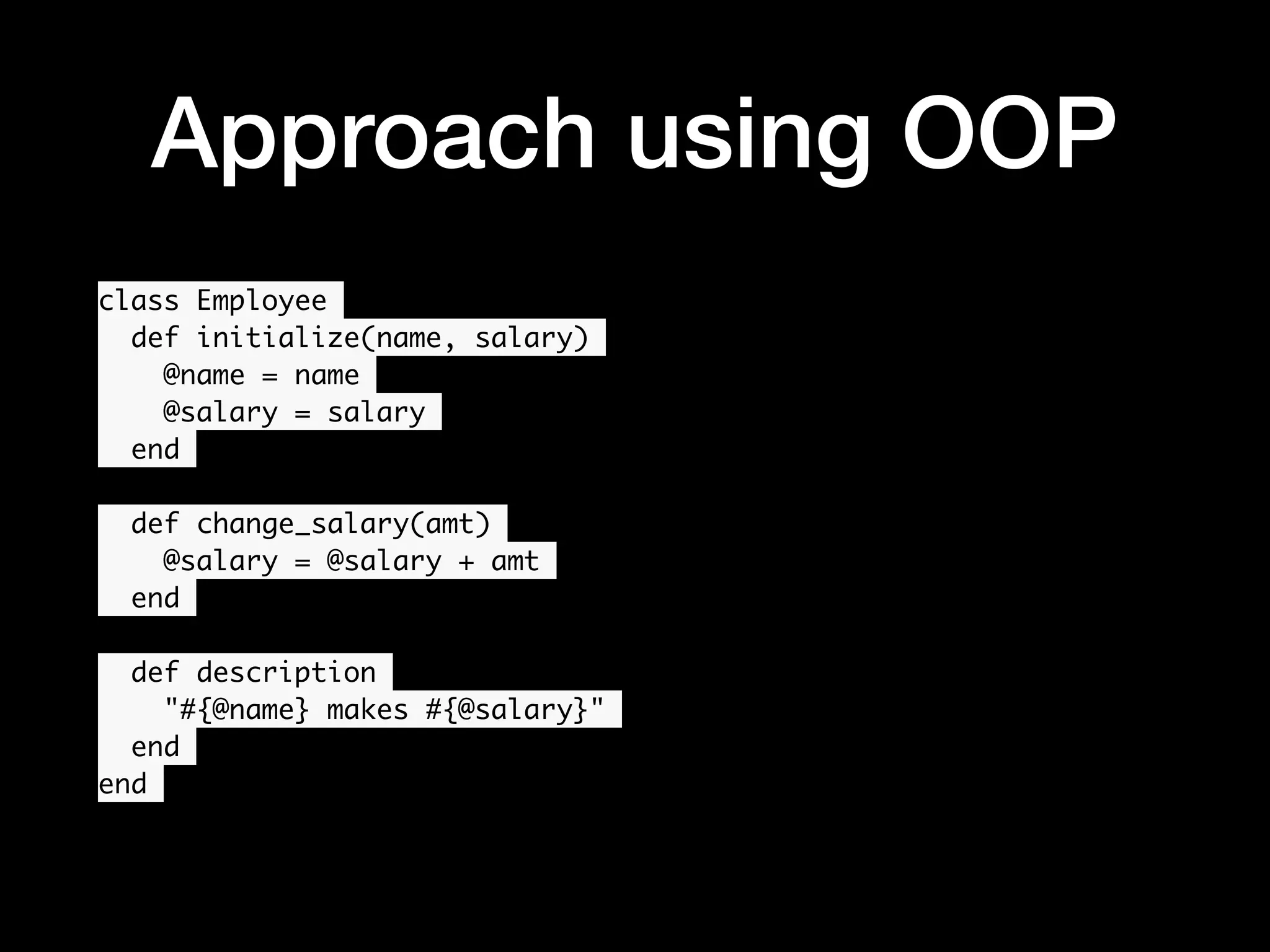
![employees = [ Employee.new("Bob", 100000.0), Employee.new("Jane", 125000.0) ] Each Employee.new(...) call creates an object with data (@name and @salary) and behavior (change_salary and description) employees.each do |emp| emp.change_salary(10000.0) end •](https://image.slidesharecdn.com/fpbasic-180530124424/75/Basics-of-Functional-Programming-18-2048.jpg)
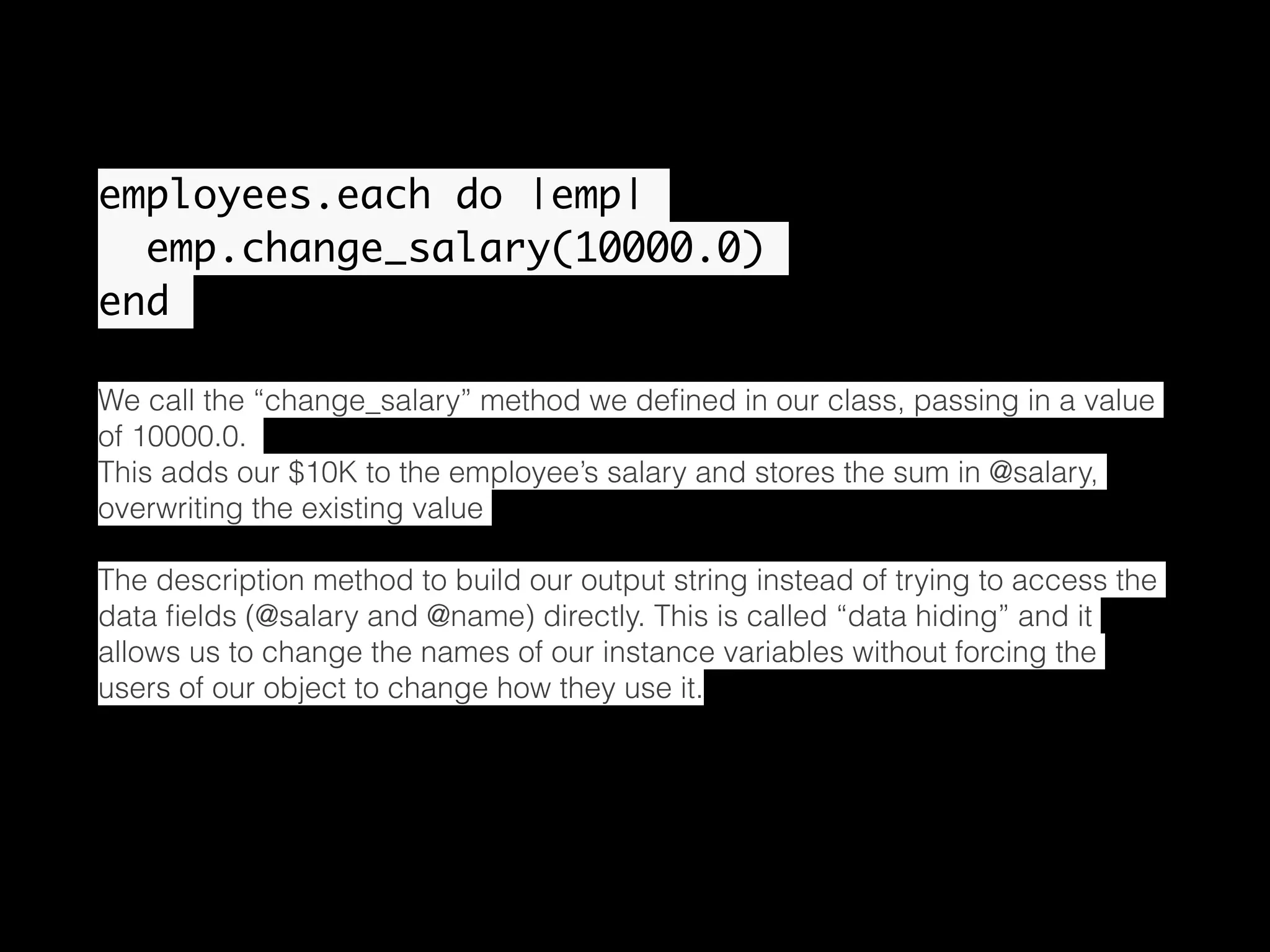
![FP Approach employees = [ [ "Bob", 100000.0 ], [ "Jane", 125000.0 ] ] Instead of converting the data to an object and then calling methods on it, we write a pair of standalone methods called change_salaries (plural) and change_salary (singular) we write a pair of standalone methods called change_salaries (plural) and change_salary (singular). We pass change_salaries two arguments: the array of arrays representing our data and the change amount. change_salaries uses map instead of the each method we used in the OOP version •](https://image.slidesharecdn.com/fpbasic-180530124424/75/Basics-of-Functional-Programming-20-2048.jpg)
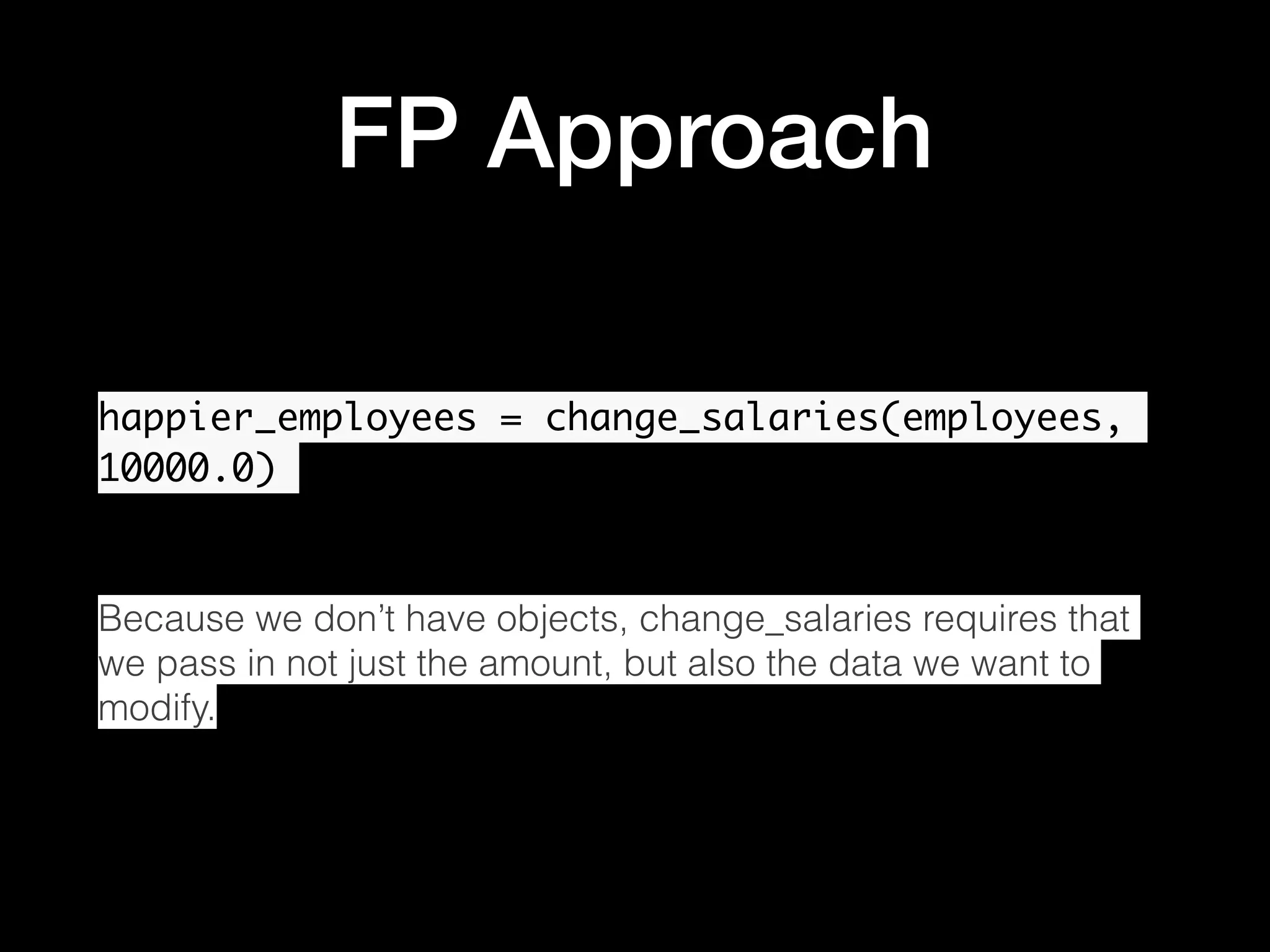
![FP Approach happier_employees.each do |emp| puts "#{emp[0]} makes #{emp[1]}" end Finally, we use ‘each’ to walk through every record in happier_employees and generate the output message ourselves. This fits the FP model because FP likes to view everything as a data transformation: you start with this dataset, apply these transformations to it (in this case, adding $10K) and generate a new dataset Another subtle -- but important -- difference is that in the OOP version change_salary used each to process each employee, but the FP version uses map. Instead of changing the original value, ’map’ creates a copy of the array containing the return value of each pass. When all elements have been processed, map hands us the copy with all the new values, which we store in happier_employees. The original array is untouched! This idea of not changing the contents (or “state”) of a variable once it’s been created is called immutability and is another key aspect of FP. Before and After state.](https://image.slidesharecdn.com/fpbasic-180530124424/75/Basics-of-Functional-Programming-22-2048.jpg)